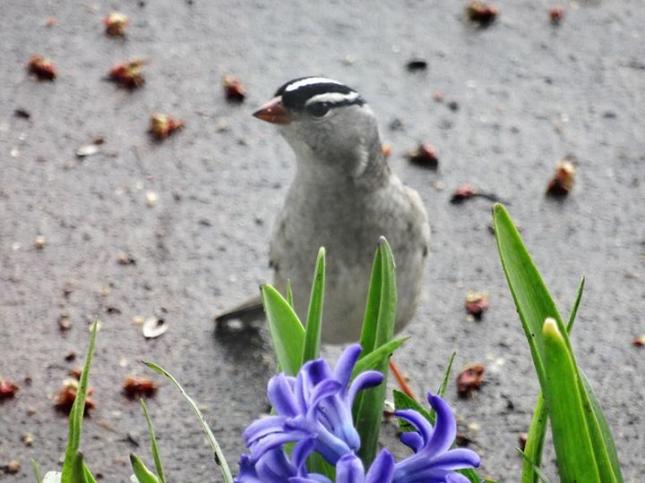
Fun Facts About White Crowned Sparrows
- White-crowned Sparrows appear each winter over much of North America to grace our gardens and favorite trails (they live in parts of the West year-round). The smart black-and-white head, pale beak, and crisp gray breast combine for a dashing look – and make it one of the surest sparrow identifications in North America. Watch for flocks of these sparrows scurrying through brushy borders and overgrown fields, or coax them into the open with backyard feeders. As spring approaches, listen out for this bird’s thin, sweet whistle.
- White-crowned Sparrows breed in open or shrubby habitats, including tundra, high alpine meadows, and forest edges. Patches of bare ground and grasses are important characteristics. During winter and on migration these birds frequent thickets, weedy fields, agricultural fields, roadsides, and backyards.
- White-crowned Sparrows eat mainly seeds of weeds and grasses, plus considerable numbers of caterpillars, wasps, beetles, and other insects during the summer. They also eat grains such as oats, wheat, barley, and corn, and fruit including elderberries and blackberries.
- White-crowned Sparrows hop across the ground and through low foliage in brushy habitats. You may see them “double-scratching,” a move they share with towhees involving a quick hop backwards to turn over leaves followed by a forward hop and pounce. When these birds arrive on their breeding grounds males and females quickly pair, then wait until snow has melted enough to begin nest building. At the end of summer the pairs break up and winter separately, but when both members of the pair return the next summer, about two-thirds of the pairs re-form. Young birds move very little for the first few days after they leave the nest, and don’t typically learn to fly until a week or so later. Siblings can stay with each other for more than two months after fledging.
- Scientists interested in movement and energetics have discovered that White-crowned Sparrows can run on a treadmill at a pace of about one-third of a mile an hour without tiring out.
- The oldest recorded White-crowned Sparrow lived in California and was at least 13 years, 4 months old.

